From sharecropping to Brunello
On the hillside which slopes down towards the Orcia and Ombrone rivers
–– Municipality of MontalcinoThe Caprili estate, covers an area of 58 hectares, southwest of the territory in the municipality of Montalcino.
The area planted with vines is 25 hectares, of which 23 hectares are planted with Sangiovese Grosso, 0.3 hectares are planted with Trebbiano Malvasia, 1 ha with Vermentino and 0.7 hectares are planted with Moscadello.
among the first to believe in Brunello
The story of a family
1911
The family moves to Podere Poggiby using the land of Tenuta Villa Santa Restituta as sharecropping
1952
The family settled in Capriliwith all their livestock, always managing the land as sharecroppers
1964
the Bartolommeis decide to purchase the propertyfrom the Castelli-Martinozzi owners of Villa Santa Restituta
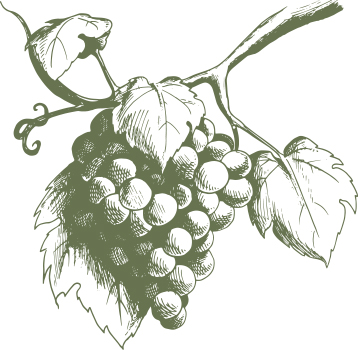
1965
Planting of the first vineyard called “Madre”from which clones are obtained for the new plants planted in the company’s new vineyards
1978
The first vintage of BrunelloThe first bottle of Brunello di Montalcino Caprili is bottled
1983
Placing on the marketCaprili’s adventure in the wine trade officially begins
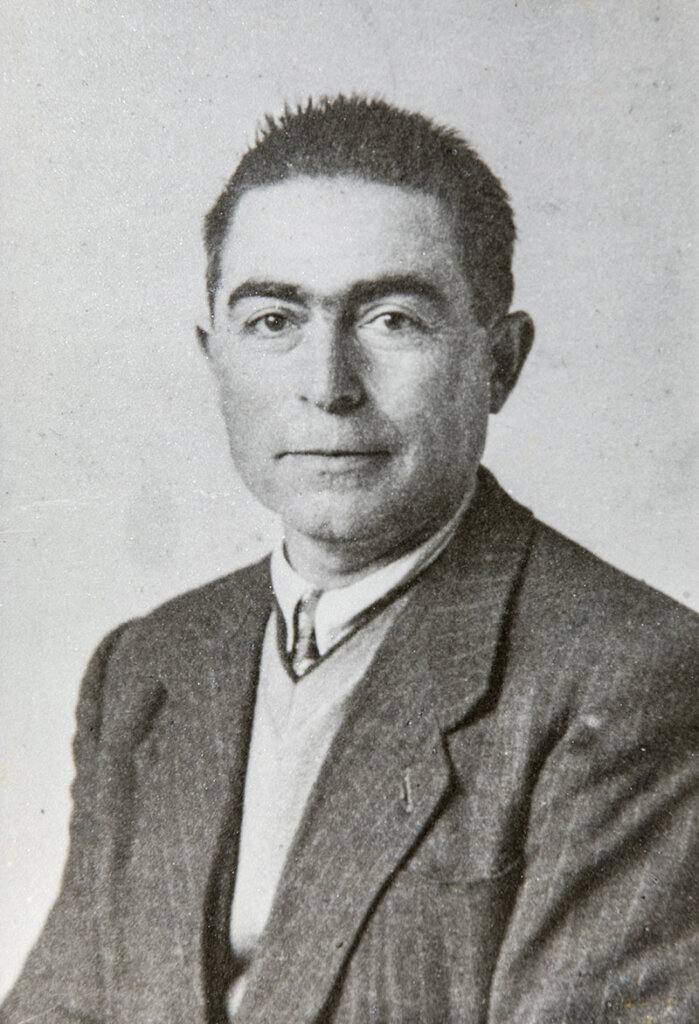
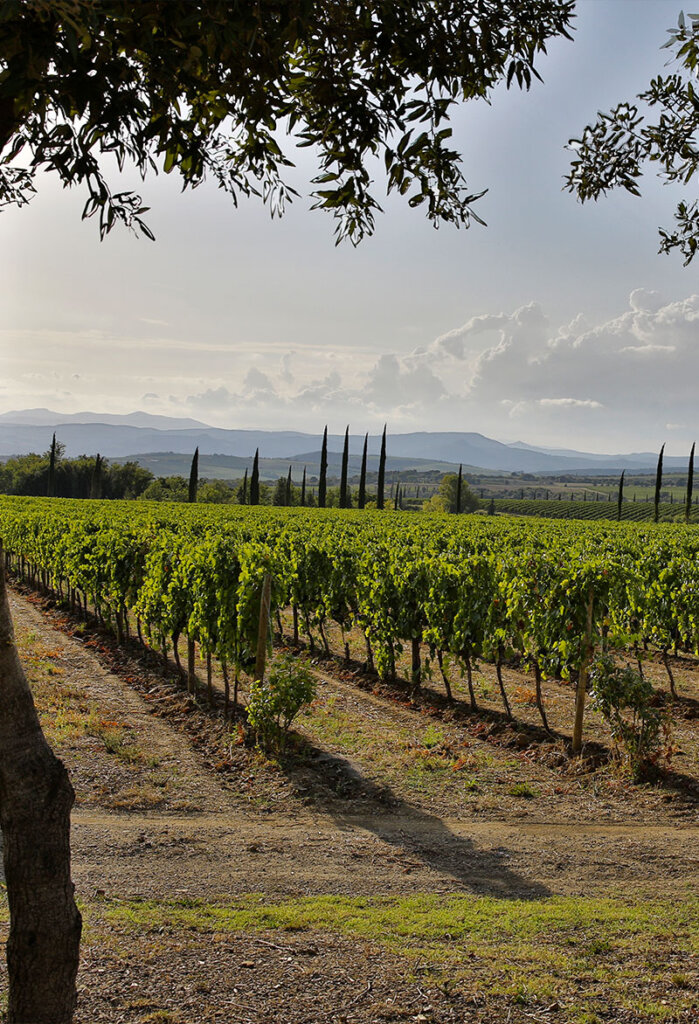
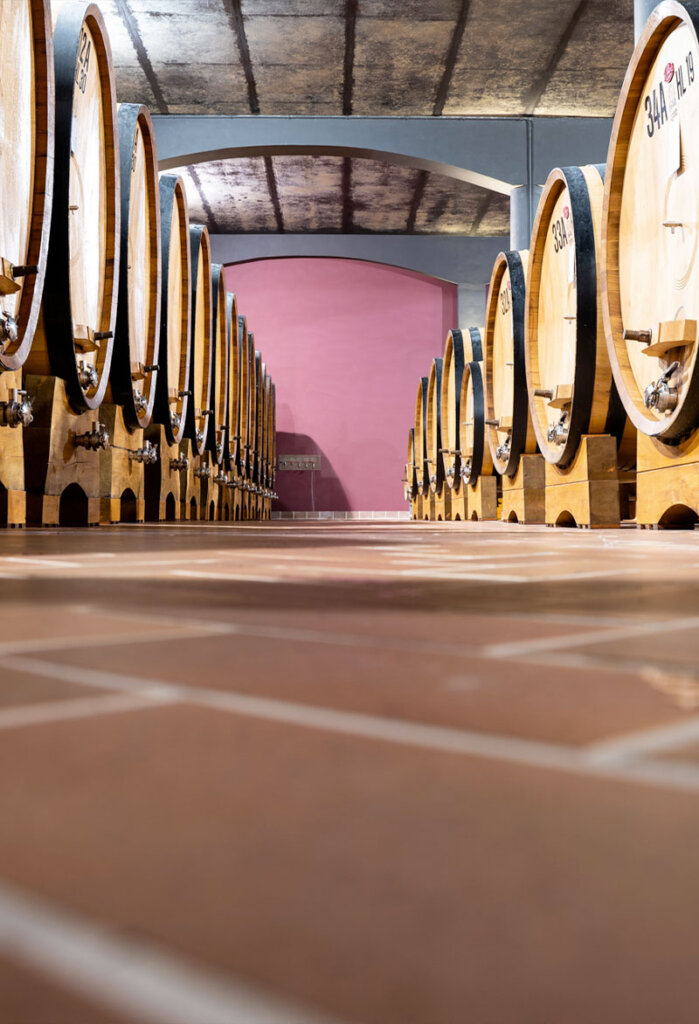
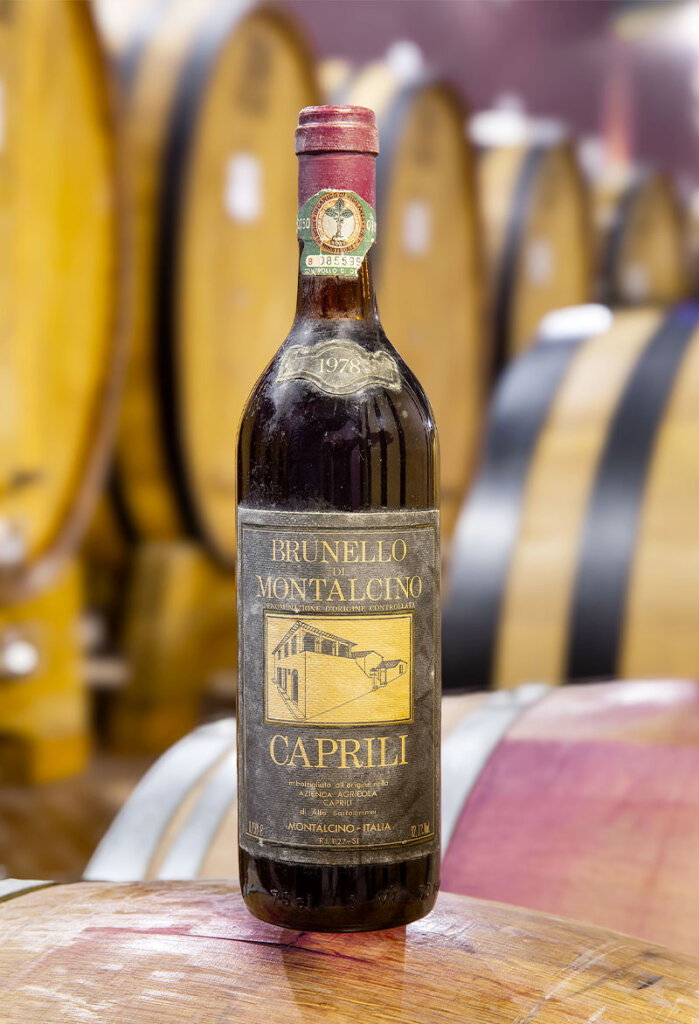
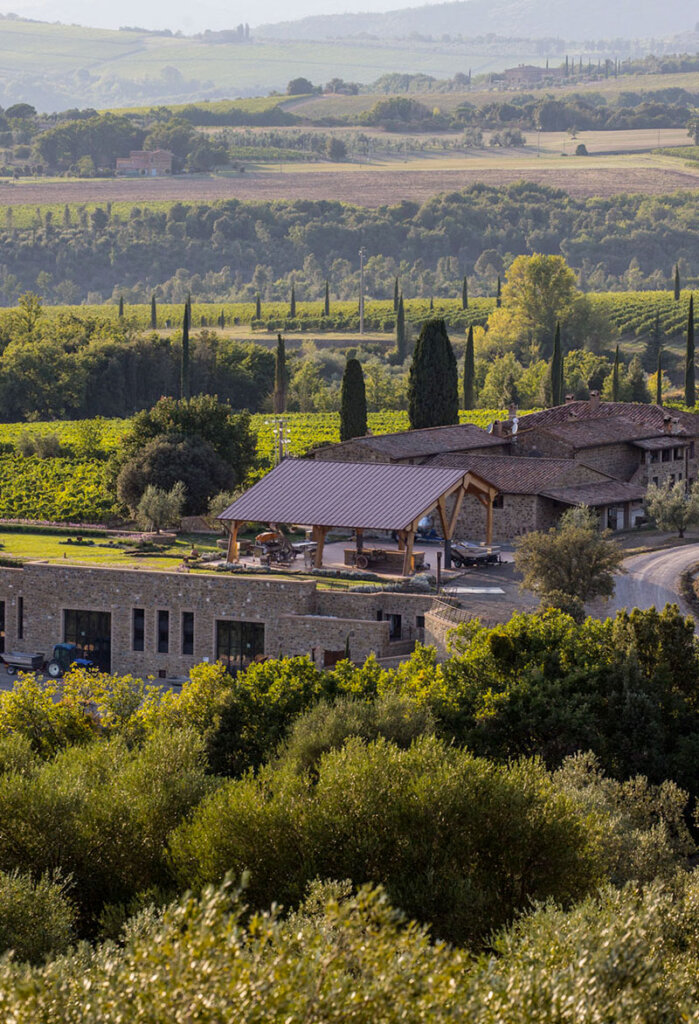
CAPRILI today
–– A passion to pass onToday of vineyards the winery, managed by Alfo’s three children, Manuele, Paolo and Paola, has 25 hectares, 11 of which are planted to Brunello and the remainder to Igt Toscana. Recently grandsons Giacomo (Manuele’s son) and Filippo (Paola’s son) have also joined the winery.
Family history
The Bartolommei family is originally from Cinigiano; they arrived in Montalcino in the early twentieth century. Giuseppe and Elvira were sharecroppers at Santa Restituta, which also included Poderi Caprili and Capanna: Alberto, their son,was only eight months old.
In 1965 Alberto and his son Alfo purchased Podere Caprili where they already they had lived as sharecroppers since 1952 and planted the first vineyard, “Madre.” Only a year later, Alberto dies, but Alfo completes the transformation of the Podere and created the company together with his wife Anna and mother Settimia.
“Vigna Madre” is one hectare planted in 1965 by Alberto and Alfo. The first grapes are 1969. Then the new plantings in 1971. In 1972 Caprili joined the newly formed Consortium of producers. The first branded wine is from 1978, the Rosso from the vineyards Brunello and later also the Brunello di Montalcino 1978. In 1983 the first Brunello di Montalcino Riserva.
Today at Caprili there are Alfo’s children (Manuele, Paolo and Paola), Giacomo (son of Manuele) and Filippo (son of Paola). The winery has a total of 59 hectares, 24.5 of which are vineyards, mostly in Montalcino (about 20 ha) and a small part in Cinigiano (about 4.5 ha).
A total of 160,000 bottles are produced, of which: 50,000 Brunello, 40,000 of Rosso, 5,000 of Riserva, 60,000 of Sangiovese IGT (Ilex), 7,000 of Vermentino (Settimia) and 2,000 of Moscadello.
The farm is completed by 4 hectares of olive groves and about 24 families of bees from which Millefiori honey is produced within the property.
From the diary of Alfo, the farm’s founder:
“In 1915 World War I began and my grandfather Giuseppe and his brother Quirino were called up for military service: lacking valid men for work and with only women and boys left, Mr. Castelli decided topass the family to Madre, a smaller farm.
Once the men returned from the Great War and the children had grown up, my grandfather Giuseppe looked for a larger farm: it was 1928 and at that time Mr. Castelli had no estates available that would suit the Bartolommei family, then, in excellent agreement with both owners, the family moved to Argiano of Count Lovatelli, exactly to the Brizio farm, conducting it on a sharecropping basis until 1935. In that year the Capanna farm remained free to Mr. Castelli so, having remained on very good terms of mutual esteem, he came looking for us Bartolommei to propose to return under his estate, and so it was. Meanwhile, my father had married my mother Settimia in 1934, I was born on November 18, 1936, and in 1942 I began attending elementary school in Tavernelle, until I graduated from the fifth grade, obtained in 1946 with excellent report card grades, which I still retain.
After finishing school elementary school, you would work all day, doing light work, for example, the cattle grazing then at the age of 15 they would start doing all the manual labor, from hoe to spade to scythe for hay. As you got older you would move on to work with the plow pulled by oxen, to the coltrina and the voltorecchio pulled by the cows. In 1951 a split occurred between my father Alberto and his brother Arnaldo, so there were only a few of us left to work the Capanna farm, otherwise, at the Caprili, a bit smaller. On January 16, 1952, we moved to the Caprili farm, bringing all the livestock and continuing in the plowing and planting work.
Being personally very fond of vine plants-at Caprili there were#no vines left very few, about 500 stumps, because of phylloxera – and of olive trees, of which there were then about 800 plants, I began to attend training courses that were conducted by the late Dr. Bruno Ciatti of the Inspectorate of Agriculture, from whom I always got a lot of good advice that in hindsight turned out to be forward-looking and futuristic. In the mid-1950s the evolution began in the countryside of mechanical means and I immediately realized that one had to keep up with the times, so, during periods of less work on the farm, I would go and learn to drive these tractors.
In 1960 I was a tractor driver at the Argiano farm, then finally, in early 1961, I bought a tracked OM50 tractor, which allowed me both to do the work on the farm and to work as a Castelli subcontractor in Santa Restituta. On September 30, 1961, I got married to Anna Maria, in 1962 the first son Manuel was born and in 1964 the second Paolo. By 1965 the Capanna farm was empty and Cesare Castelli, Guido’s son, said to me, ‘I will sell Caprili to you, but if you can also find me a buyer who will buy Capanna.’ We knew that Giovanni Mastropaolo, an entrepreneur Italian who had made his fortune in South America, owner of the estate of Poggio alle Mura, wanted to remove all the farmers from the estates and that the Fattoi family did not want to stop, so one evening I went to see them and convinced them to come the next day to see the property: they liked it and so we bought the 2 farms-they were the first ones sold by the Castelli Martinozzi family – we through a 20-year low-interest mortgage interest of small peasant property, financial instruments created at that period to revive the agricultural sector. In fact, like just about everywhere else, the in Montalcino the countryside was being severely depopulated, everyone was leaving to seek employment in the city, and unfortunately it became the poorest municipality in the province of Siena. And those, like us, who instead decided to revive and invest in the land, we were even laughed at first. Caprili, which was paid 6 million liras (75.000 € as of today), was a property of 49 hectares in total, a large part of which was in forest – we still have 15 hectares of it today -, 10 hectares of arable land and 5 hectares of olive groves. In 1971 I planted the second vineyard and immediately started the paperwork for registration on the register of Brunello di Montalcino vineyards, and in 1972 I became member of the Consortium, which had been established in 1967. In 1974 the third daughter Paola arrived, and in those years we restored the farm and planted more Brunello vineyards, so in 1978 we had 3 hectares in production. In those years, seeing that from the markets there was a good demand for bottled wines, we removed the cattle and converted the barn into an aging cellar, buying barrels of 40-hectoliter Slavonian oak barrels. Until then we sold the wine in bulk in demijohns and some of the certified Brunello grapes to other wineries, which had already started bottling. From that point, also helped by our children, we decided to devote ourselves more and more to the cultivation of the vineyard, planting more hectares and following directly the marketing of bottled wines. In 1979 we came out with our first Rosso 1978, then called ‘from the Brunello vineyards,’ and in 1983 with the first Brunello vintage 1978, only 5,000 bottles, some of which immediately left for the United States of America, we were then only 15 wineries.“
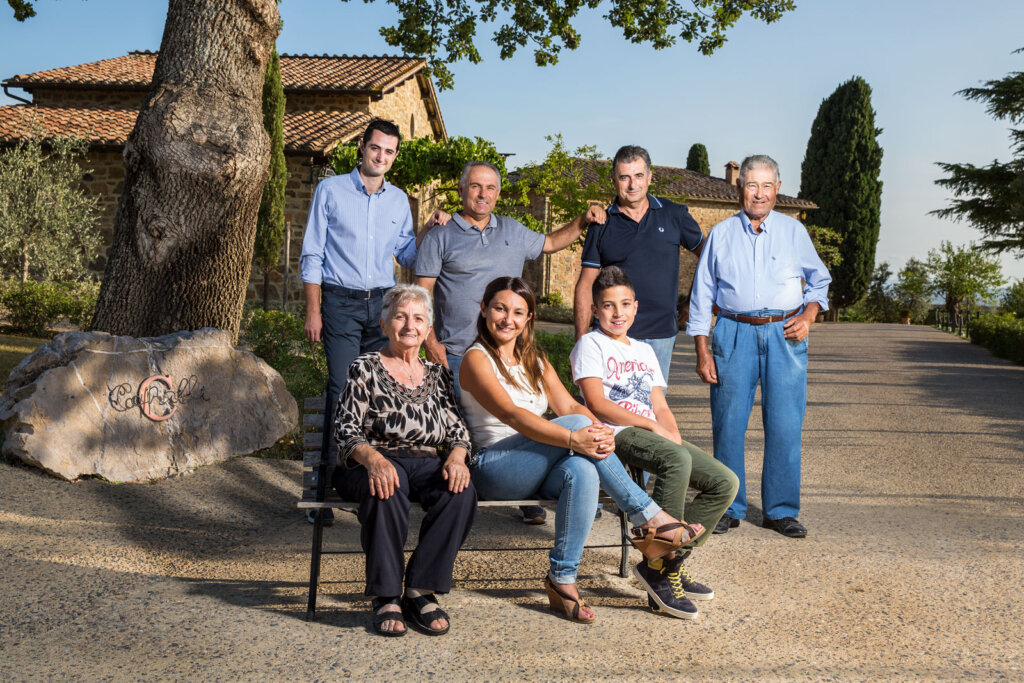
Our wines, and more

AdAlberto riserva
Brunello di Montalcino D.O.C.G.Brunello di montalcino riserva
Brunello di Montalcino AdAlberto is produced in the Madre vineyard (1965) and fully represents the style of Ilcinese Sangiovese.
Production area: Montalcino (SI) – Tuscany – Caprili locality; grapes from our vineyards: Vigna Madre (planting year 1965).
Grapes: 100 % Sangiovese grosso, called in Montalcino: Brunello. Strains per ha: 4000; Maximum grape yield provided for in the specification 80 q/ha.
Vinification: Fermentation and post-fermentation maceration in steel tanks lasting 25 days. Fermentation occurs naturally, taking advantage of the indigenous yeasts present in the grapes. The fermentation temperature is maintained between 30 and 33 °C.
Aging: After completion of malolactic fermentation in cement, this is followed by aging in wood for 2 years in Slavonian oak barrels of 30 HL capacity and subsequent aging in bottle for at least 1 1/2 years.
–– Organoleptic characteristicsColor: Ruby red tending to garnet
Nose: Broad, ethereal fruitiness with a hint of resinous spice.
Taste: Warm, intense, harmonious. Leaves a myriad of small, pleasant sensations on the palate.


Brunello di Montalcino
Brunello di Montalcino D.O.C.G.Brunello di montalcino
One of the noble Italian Bs of oenology, an expression of a territory that is always growing in quality. It is made from 100% Sangiovese grapes and is considered one of the best examples of Brunello di Montalcino, known for its elegance, complexity and aging potential. Denomination: Brunello di Montalcino D.O.C.G.
Appellation: Brunello di Montalcino D.O.C.G.
Variety: Sangiovese Grosso
Vineyards: 4 of which 3 are contiguous near the winery center.
Fermentation: spontaneous thermoconditioned in steel for up to three weeks.
Maturation: 24/30 months in large Slavonian oak barrels followed by at least 9 months in bottle.
Characteristics: Soft and less tannic than the Riserva the Brunello has intense color, broad aromas with notes of red berries. On the palate it gives a well-balanced body with tannins well blended into the structure, ensuring elegance and longevity.
Pairings: Goes well with red meat dishes, game and aged cheeses.


Rosso di montalcino
Rosso di Montalcino D.O.C.Rosso di montalcino
Originating as a younger brother of the famous Brunello, it has now taken on a personality of its own and has excellent acceptance in wine bars; it is often served as a wine by the glass
Appellation: Rosso di Montalcino D.O.C.
Variety: Sangiovese grosso
Vineyard: Testucchiaia
Fermentation: spontaneous thermoconditioned in steel tanks for up to three weeks.
Maturation: 12 months in large Slavonian oak barrels, followed by several months in bottle before release.
Characteristics: enjoyable wine from a young age but with marked aptitudes for aging for 8 years.

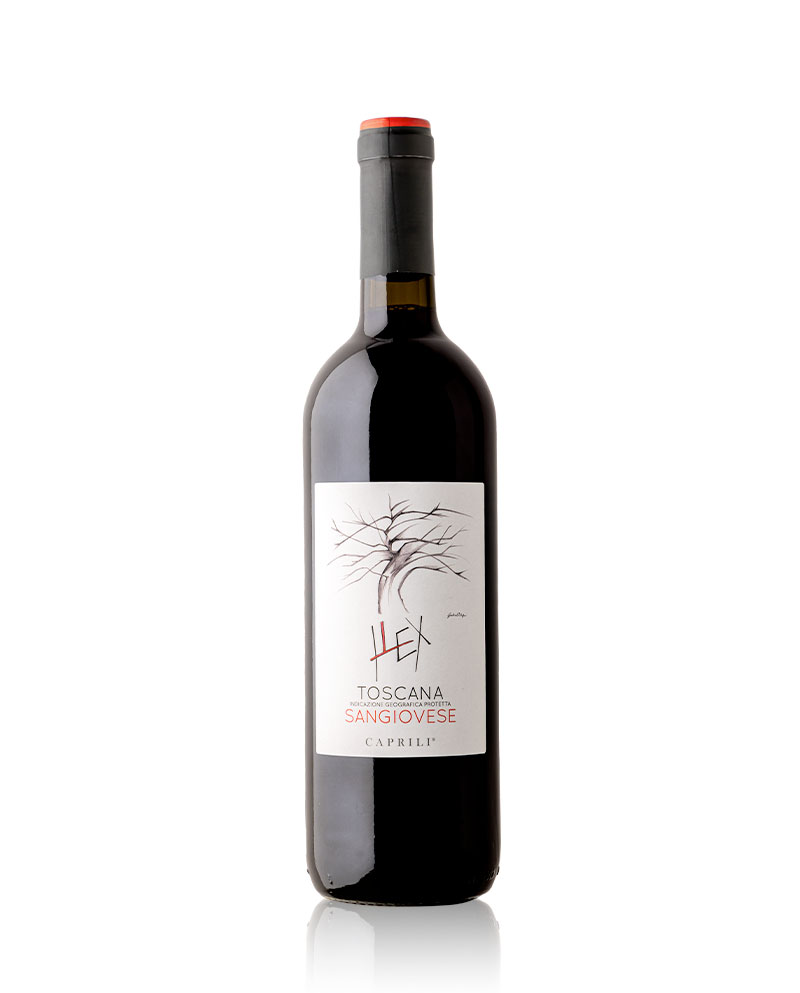
Ilex Toscana Sangiovese
Toscana IGT Sangioveseilex toscana sangiovese
Appellation: Toscana IGT Sangiovese
Vitigni: 95% Sangiovese grosso, 5% international varieties including predominantly Merlot and Syrah.
Vinification: Fermentation occurs naturally without the addition of yeasts, at a controlled temperature not exceeding26°-28°C MAX. Maceration lasting 10 days in steel tanks. Followed by storage in steel and bottling during the year following the harvest.
Tasting notes: deep ruby red with violet hues, ripe red fruit aromas, juicy drinkability.

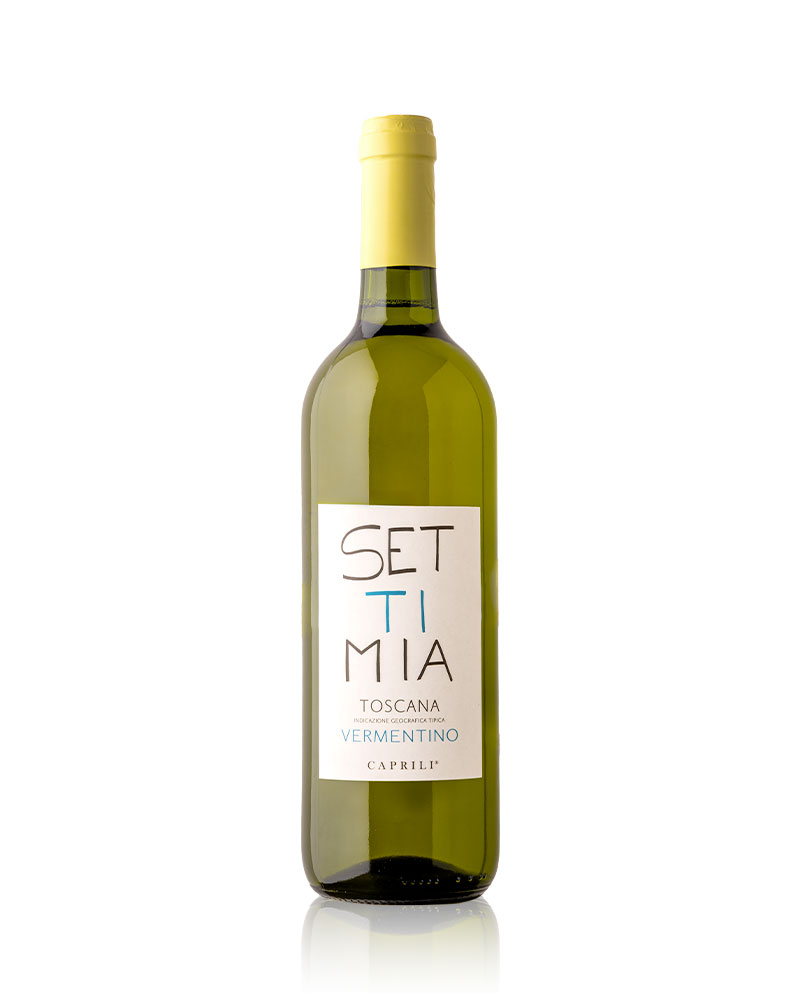
Settimia
Toscana IGT VermentinoSettimia
The latest addition to the wines produced by the winery comes from vermentino grapes, in purity, found throughout the Mediterranean area, with warm, breezy climates. Dedicated to Alfo’s mother, Settimia.
Denominazione: IGT Toscana Vermentino
Variety: Vermentino
Vineyard: Fornacina
Fermentation: soft pressing, racking, fermentation in temperature-controlled tanks at 16-18°C for 2-3 weeks. Stabilized from November until early March and bottled in April.
Characteristics: a fresh, aromatic wine that can be paired with fish dishes, pleasant for snacks, aperitifs and happy hours or sipped with friends at wine bars.


Moscadello di montalcino
Moscato biancoMoscardello di Montalcino
This is the oldest wine produced in Montalcino, already extolled by Francesco Redi in his dithyramb “Bacchus in Tuscany.”
Variety: Moscato bianco
Vineyard: Fornacina
Fermentation: spontaneous thermoconditioned in steel tanks until residual sugar of about 90-100 g/L. At the end of stabilization it is filtered and bottled in December.
Characteristics: Straw yellow in color, the nose has floral notes, typical of Muscat grapes. In the mouth, the freshness and sweetness make it very palatable. Bottle maturation capacity for 5 years.

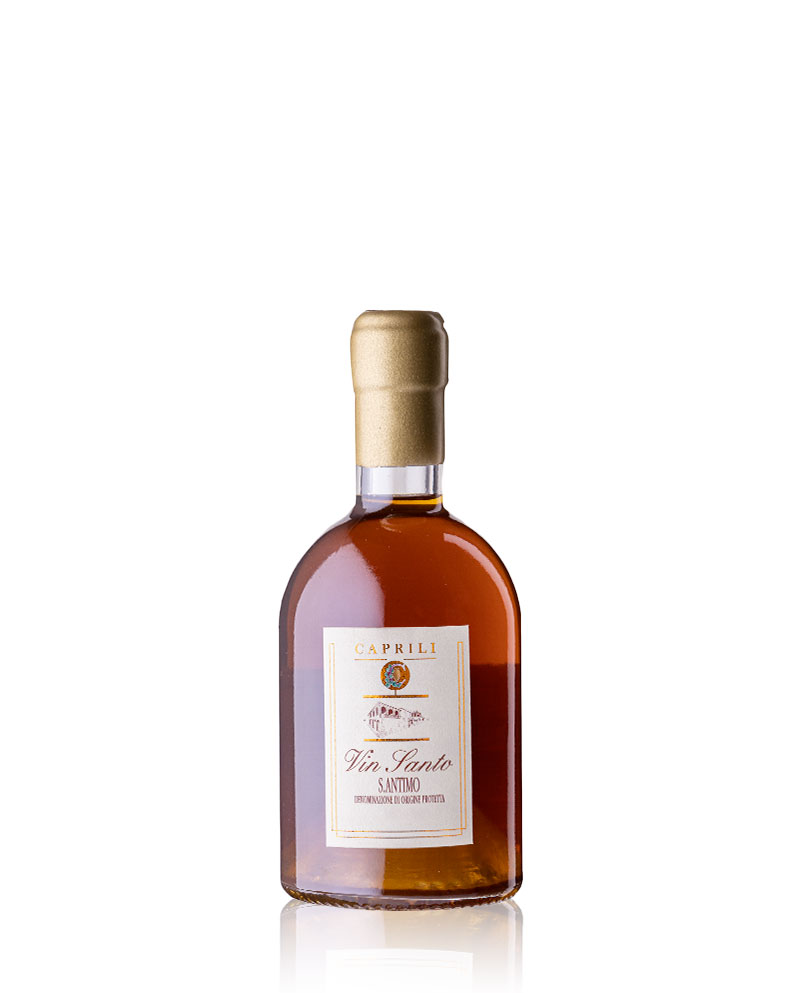
S. Antimo
Vin Santo D.O.P.Vinsanto Sant’Antimo DOP
Grapes: 60% Trebbiano + 40% Malvasia
Vinification: harvested in late September and placed in fruit lofts for dehydration until December. Destemmed by hand and pressed with manual vertical press. Finally placed in 30, 40-liter kegs for fermentation.
Aging: In small 30- and 40-liter Slavonian oak barrels for 3 years.
Color: Deep amber yellow
Aromas: Sweet fruit and spices

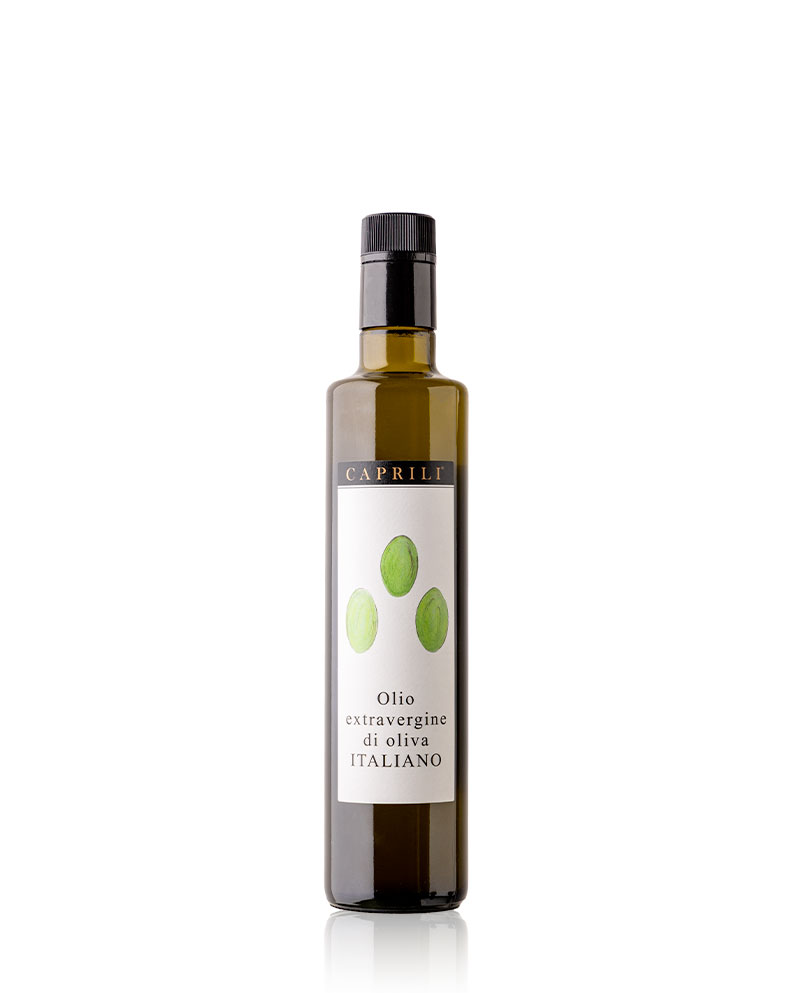
Olive Oil
ExtravirginExtravirgin Olive Oil
From our 1500 trees of different varieties: frantoio, moraiolo, leccino that give life to our extra virgin olive oil. Careful control, from the harvesting of the fruit to pressing and bottling, is an essential element in producing an EVO Oil rich in nutraceutical properties.
Also playing a key role, in terms of quality, are the very short waiting times between harvesting and pressing.

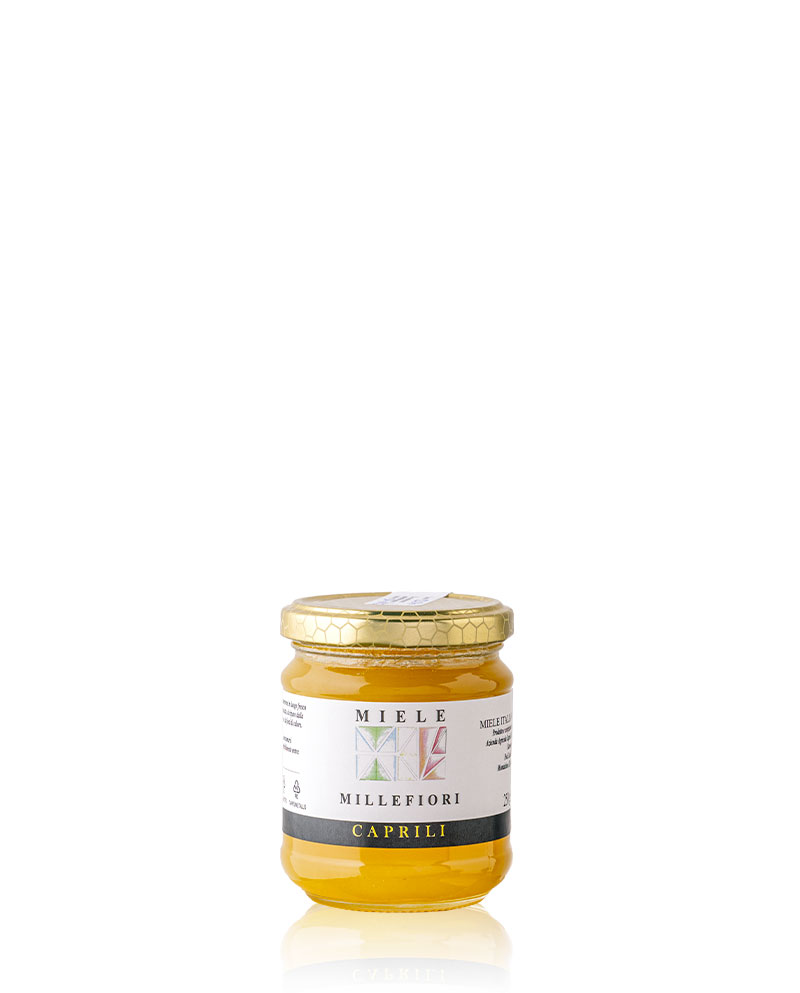
Honey
MillefioriHoney Millefiori
Millefiori honey is produced between Montalcino and Cinigiano from a multitude of different types of flowers, and it is the diversity of the flowers and the nectar production area that give this honey unique characteristics.
The properties of wildflower honey are varied: it is widely used in cooking, both combined with cheese and as a natural sweetener.
It is also an excellent immune booster and restorative and is often used in the preparation of natural remedies.

Visit the vineyards and cellars
Visits to our winery are open in the afternoons on weekdays starting at 4 p.m.
During the visit there will be an introduction to our vineyards, tour of the winery and tasting of our products. The duration is approximately 1h30m.

La Degustazione
Settimia, Rosso di Montalcino and Brunello di Montalcino
€35 / per person
La Verticale
Settimia, Rosso, Brunello current vintage, Brunello historical vintage
€50 / per person
La Storica
Settimia, Rosso, Brunello current vintage, 2 Brunello historical vintage
€80 / per person
